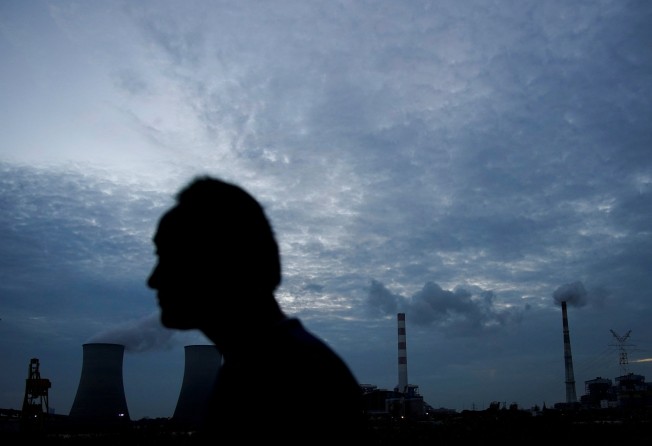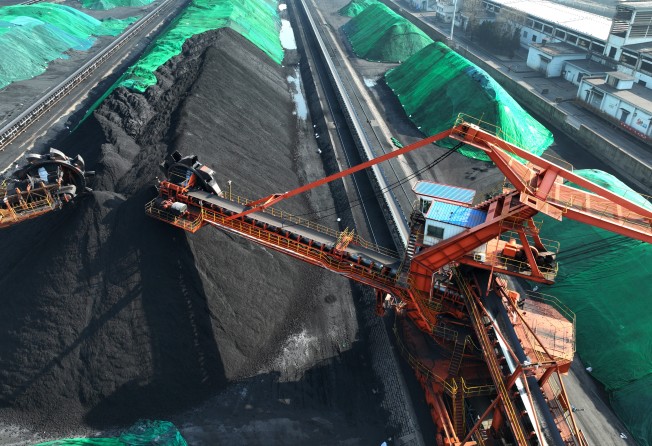
How China can solve its energy ‘trilemma’ and avoid a climate policy swing
- The sometimes competing needs of energy security, economic viability and environmental protection are an especial challenge for China’s top-down system
- Beijing should complement its decision-making on climate with a bottom-up approach to avoid drastic policy swings, such as on coal

Observers of China may have noticed an interesting phenomenon in its political and economic arenas: a cycle where strict control leads to stagnation, followed by an abrupt change towards a total delegation of responsibility, which results in disorder and chaos. This cycle has been most evident in China’s recent Covid-19 policy change.
But China’s climate actions in recent years have also shown signs of going through this cycle. Following its climate pledge in 2020 to reach peak carbon emissions before 2030 and achieve net zero by 2060, China saw a wave of “campaign-style” carbon reduction efforts.
There was a surge of climate-oriented policies and initiatives by governments at various levels. In some regions, factories were forced to close down and the power supply was cut as local governments came under pressure to hit energy control and carbon emission targets.
But a notable policy swing took place after the country was hit by energy supply shortages and soaring prices. Contrary to previous strict controls on coal to cut emissions, China’s coal output has been boosted since the second half of 2021.
Last year, 300 million tonnes of new coal production capacity was approved, on top of the estimated 220 million tonnes added in 2021. Coal output in the country reached a record high of 4.07 billion tonnes in 2021; and again in 2022, with a further increase of 8 per cent, to 4.45 billion tonnes.
More worrying is the significant policy change on coal power projects. According to a study by Peking University’s Energy Research Institute, the government approved 65 gigawatts of new coal power projects in the first 11 months of 2022, more than three times the capacity approved in the whole of 2021. Once in operation, these new coal-fired power plants will pose a challenge to China’s carbon emission reduction efforts for many years.

The drastic policy swing on climate is because, fundamentally, China’s political system has difficulties handling “multitasking” problems. These are problems that arise when an objective cannot be comprehensively captured by reference to a single indicator, for example, gross domestic product growth.
In a political system characterised by the concentration of power and top-down decision-making, this type of problem is difficult to address because of structural flaws, such as the ways in which power distorts information flows and the challenges involved in evaluating performance and incentivising officials in tasks where outcomes are not so easy to measure.
Since 2014, China has formally embarked on an “energy revolution” with the goal to develop a cleaner, more secure and more efficient energy system. Over the past eight years, China’s energy mix has indeed undergone substantial changes. The contribution of non-hydro renewable power to primary energy consumption has risen from less than 2 per cent in 2014 to over 7 per cent in 2021.
The share of fossil fuels has also dropped, from almost 90 per cent to around 80 per cent. China has developed internationally competitive industries in renewable energy technologies. In many of these areas, such as solar panels, wind turbines and electric vehicles, Chinese companies have achieved leading positions in the global market.
The country’s commitment to net-zero carbon emissions is also widely praised by the international community.

But to achieve the goal of an energy revolution, the country needs to navigate three different – and sometimes competing – objectives, in energy security, economic viability and environmental protection, or what some describe as the “energy trilemma”.
This threefold energy dilemma poses significant challenges to governments across the world. As shown in the recent energy crisis in Europe, climate policy in Western countries can be adversely affected by electoral cycles, an overemphasis on individual economic welfare and freedom, and the failure to take fast and decisive actions.
Under China’s political system, however, the effectiveness and longevity of its climate policy can be undermined by an overreliance on its top-down approach.
This is because many of the activities required to achieve the objectives involved in the energy trilemma are difficult to define or evaluate with quantitative measures. So local officials tend to focus on the performance indicator being emphasised at the time by the leader.
Meanwhile, the climate policy can be ineffective when it fails to gather enough information from a wide range of stakeholders for the policy design or receive sufficient participation in the implementation process.
China should complement its top-down decision-making on climate with a bottom-up approach to navigate its energy trilemma and avoid drastic policy swings. Stakeholders with different interests should be more involved in the development and implementation of the country’s climate policy.
Mechanisms should be established to enable transparent and just negotiations among stakeholders. And the accountability of leaders should be enhanced to improve their decisions.
These institutional arrangements seem necessary for China to achieve an effective and just energy transition. Unfortunately, it may become increasingly difficult to implement these principles against the backdrop of a growing concentration of political power.
Hao Tan is an associate professor and deputy head of Newcastle Business School at the University of Newcastle Australia, and a researcher on energy and climate policy
